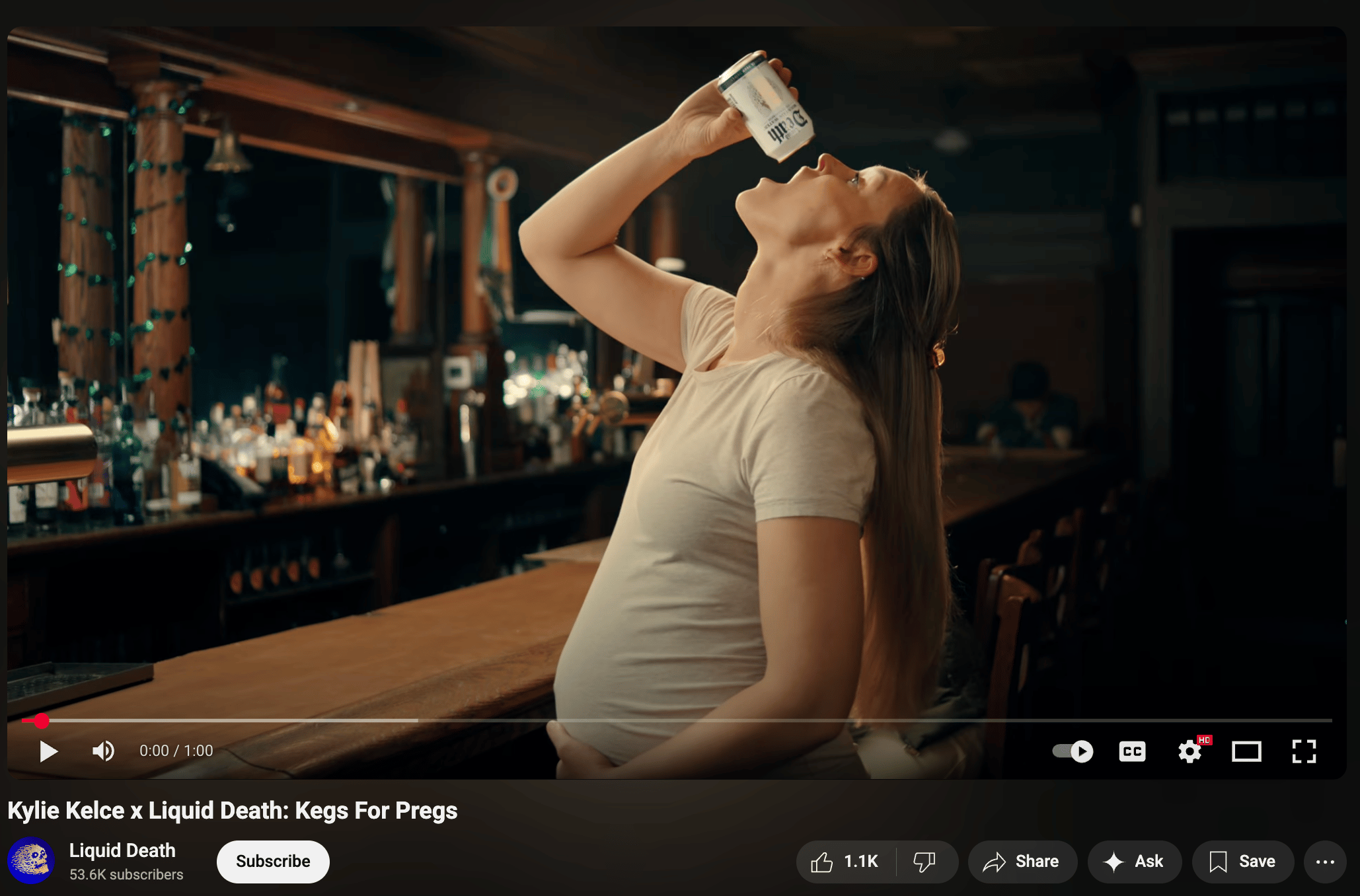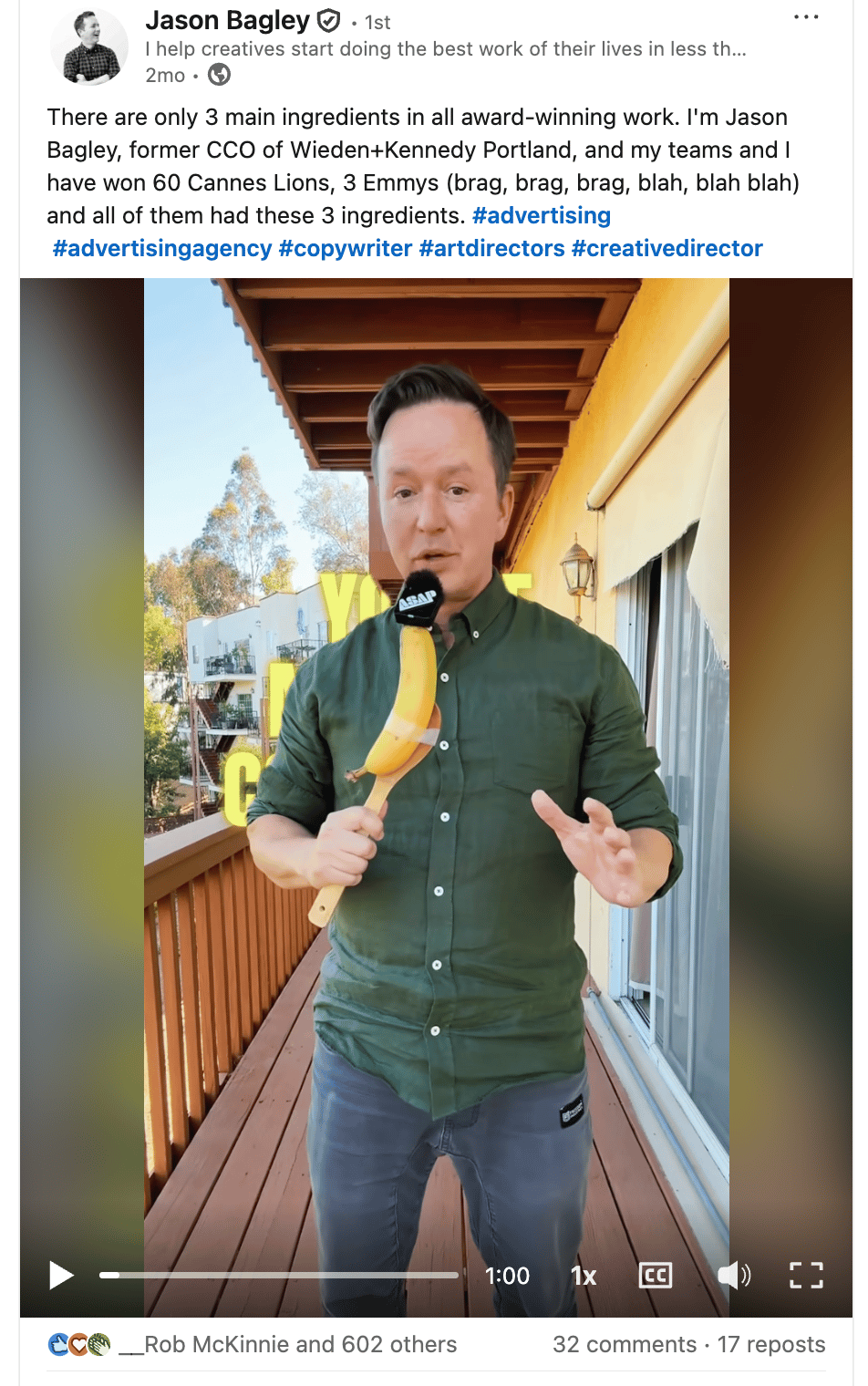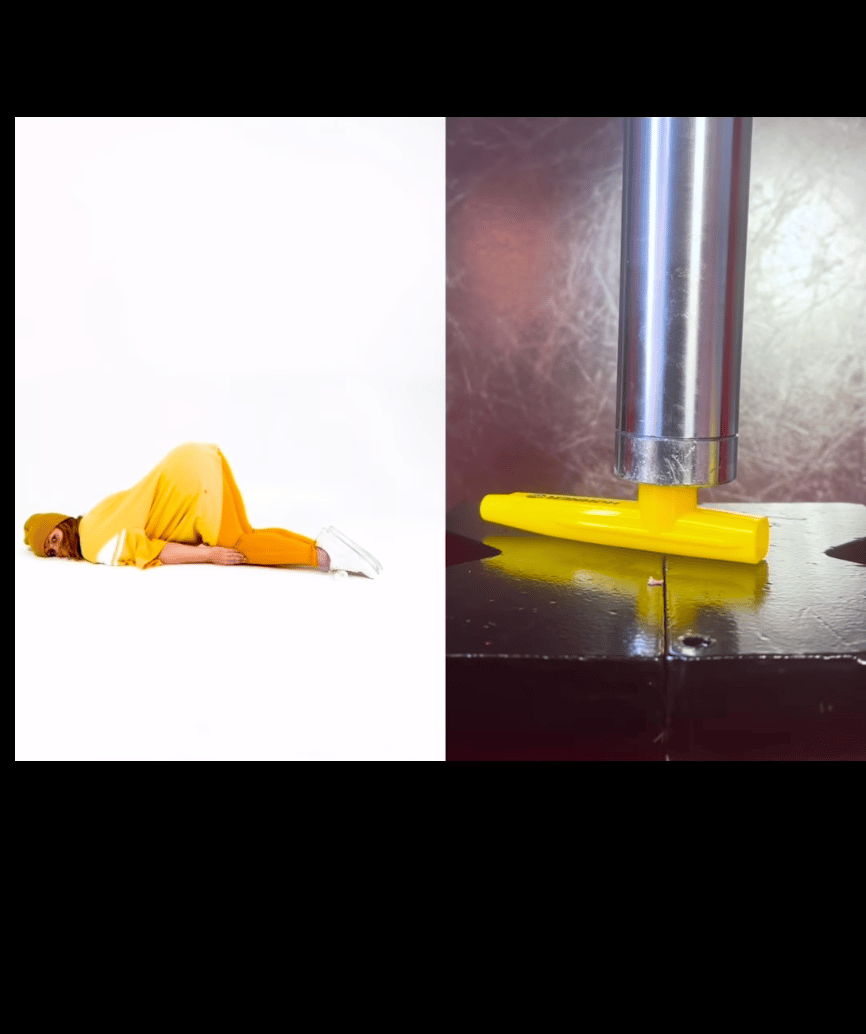Growth Newsletter #288
You’ve probably experienced this phenomenon at a red light.
The car next to you rolls forward, and for a split second, your brain screams, “YO buddy! You’re rolling backwards!” Your foot stomps the brake pedal. Then you breathe a brief sigh of relief, because you realize you weren’t actually moving at all.
That half-second panic was your brain’s autopilot mode getting hijacked by unexpected input.
Good marketers try to do the same thing all the time. It’s called a pattern interrupt, and it’s how you yank someone’s attention out of their social feed, inbox, or a number of other places where you have to swim upstream against your audience’s “unconscious” mind.
Depending on who you ask, people are exposed to anywhere from 4,000 to 10,000 marketing messages on a daily basis.
The fact that you can probably only recall a few from yesterday (if any at all) is proof that your brain actively mutes or filters out nearly all of these messages.
A pattern interrupt isn’t the only way to get your marketing messages to stand out or to grab someone’s attention, but it’s an incredibly powerful principle that should be present in your mix.
So let’s dive into the ways you can use pattern interrupts to manufacture more memorable moments across ads, cold outreach, content, and more.
— Gil
This week's tactics
The Power of the Pattern Interrupt
Insight from Gil Templeton — Demand Curve Staff Writer
Many businesses and marketing teams might think they’re tapping into pattern interruption when they’re really just doing something different. But those aren’t necessarily the same thing.
Differentiation is a more strategic, long-term approach. It’s the proverbial “zig when they zag” play that clearly defines who you are in a category.
But pattern interruption is way more micro. It’s a mere moment. It’s the “Wait, what?” that makes someone snap to attention and notice you in that instant.
So try to think of it like this (building on our driving analogy from the intro): “Zigging” is your choice to change what lane you’re driving in. Pattern interruption is you slamming the brakes hard enough to make other people to look over at what the hell just happened.
The best marketers do both: they pick a lane that’s fundamentally different, then they use pattern interrupts to make people actually stop and take notice.
Let’s take a channel-specific look at how you might level up your pattern interruption game.
Pattern Interrupts in Paid Ads
Everyone is chasing clicks, but before the “click” comes the “pause.”
People ignore ads, not necessarily because they hate them, but because they’ve learned what ads look like.
Because if it walks like a duck and talks like a duck, it’s probably a duck. That’s why your copy and visuals need to convey you’re a golden goose.
Real examples
- Liquid Death: Almost always starts their ads with something jarring and unexpected. Like this opening frame of “Kegs for Pregs” where we see a pregnant woman chugging her drink at a bar, which runs contrary to every social cue we’ve been conditioned to trust. It’s a textbook technique: take a taboo image, make people lean in, and earn a second of stunned silence before the reveal.

- Ryan Reynolds in Mint Mobile ads: He reads ad copy that obviously knows it’s ad copy, disarming the audience. “The marketing department asked me to be as explicit as possible when explaining it, so here we go. We don’t like f***ing our customers over like Big Wireless.”
Common headline approaches that interrupt:
- Apparent Contradictions: Violate common logic, so people want to “resolve” it and learn the story. You can lean into success via subtraction, chaos, or loss.
- “Double your revenue by deleting half of your website.”
- “Built for speed. But beloved for slowing you down.”
- “Our secret ingredient? The one we took out.”
- Abnormal specificity: Use specific numbers to imply truth and intrigue. Your reader assumes there’s a story behind them.
- “It took 19 tries to make a cookie our grandma wouldn’t hate.”
- “This single line of code saved a client $480,391 in Q3.”
- “Worn for 137 hours straight. Still didn’t smell.”
- Deadpan honesty: Use humor, candor, and mild deprecation to create copy that sounds too human to be another ad.
- “We’re not the cheapest, but probably the least annoying.”
- “Yes, we fix pipeline problems. No, we can’t fix your marriage.”
- “No influencer or unboxing video. Just the thing you want.”
- Reverse logic: Break the established expectations by flipping the benefit with paradox or defiance.
- “The best makeup is less makeup.”
- “Stop chasing sleep. Start chasing calm.”
- “Fewer meetings. More momentum.”
- Curiosity gap: Tease something emotional or dramatic without revealing the “why” just yet.
- “We made this candle as a joke. Now it’s our top-seller.”
- “Try the formula nobody believed would work.”
- "It doesn’t look like much. Until you try it.”
Tips for writing pattern interrupts in ad copy:
- Start with friction. Lead with something that clearly doesn’t belong (a pause, unexpected phrase, strange image).
- Exploit category clichés. Know what your audience has come to expect, and flip it on its head.
- Show/speak to the moment after or the result instead of the setup. Jump-cut storytelling makes the brain want to catch up.
Pattern Interrupts in Cold Outreach
Sending emails to prospects is a numbers game. Knowing that the majority of cold emails, DMs, and other messages get glossed over, pattern interrupts can be a powerful x-factor in achieving a better response rate.
A little humor, self-deprecation, or creativity can go a long way, but make sure you aren’t being annoying or unprofessional just to grab eyeballs.
Let’s look at some various ways to use pattern interrupts in cold email outreach.
Make the subject line your playground
Busy people who get sales emails all the time scan subject lines on autopilot. This is the first (and sometimes the only) part of your email they’ll see. So think about these standout subject lines like “hooks” that can open the door to deeper engagement with your message.
If you’re sending a number of cold emails regularly, this is something you can easily test. If one subject line flopped and yielded no responses, ditch it. If another one fostered responses at a noticeably higher rate, embrace it.
What not to do in a subject line
Make sure your subject lines don’t seem too expected or self-centered. You should also start by piquing the reader’s interest instead of letting your agenda show.
Typical “Dead On Arrival” cold email subject lines:
- Quick question
- Following up on my last email
- Let’s connect!
- Are you the right person to talk to about [X]?
- We help companies like yours do [X]?
- A new partnership opportunity for [Company Name]
The above examples all follow similar patterns: predictable verbs, no context, no curiosity sparked. They show the email is about the sender’s needs, not something that might benefit or interest the recipient.
Strong pattern interrupt subject lines
Below are following themes or routes you can experiment when writing subject lines that stand out. These are best when they’re actually relevant or can be paid off with a real insight or observation. Try not to just bait clicks for clicks’ sake.
Remember to keep this short and punchy, so it can be read at a glance and show up in its entirety in their inbox.
Conversational & Human:
- “This is a weird way to start an email.”
- “Not sure if you’ll hate this idea or love it.”
- “This email is Certified Human-Written™”
Curiosity-Based:
- “You probably won’t agree with me on this. At first.”
- “This trend made me think about your product.”
- “We found something you might want to see.”
Self-Aware:
- “Yes, it’s a cold email. No, I won’t waste our time.”
- “You don’t know me, but I think I know your problem.”
- “Not trying to be clever or cute, just relevant.”
Playful & Unexpected:
- “Please do not open if your funnel is already perfect.”
- “My wife told me not to send this.”
- “Our intern actually had a good idea for your business.”
Inside the email
Once you’ve gotten them to open your cold email via a sneaky good subject line, here’s some general guidance. Keep in mind different things can work for different readers, but following the tips below will likely help you get to solid ground.
This isn’t textbook “pattern interrupt” guidance, but still helpful since we’re here.
- Keep it short and sweet: Don’t hit them with the expected deep dive on your company or a laundry list of bullet points. Make it something they can digest within 10–20 seconds or so.
- Make the first sentence conversational: Instead of diving right into the context, start with something personal and disarming like, “This might be the worst way to start an email, but…”
- Break your content into short blurbs: This tends to make your copy look less daunting or dense.
- End with humor or candor: Saying something like “Even a polite ‘no’ would make my day” is a disarming, charming sign-off.
Get creative with it
Like we mentioned, cold email is a numbers game. Creativity is your friend, because it helps you break out of established patterns, and it gives you immediate feedback on whether your execution worked or not. So feel free to try new formats and swing for the fences, like two of the examples below do.
Nearly ten years ago, I received a textbook “pattern interrupt” email that I still remember (and that I could still locate in my inbox).
The sender name was just “Dad” and the subject line said, “It’s Time To Have ‘The Talk’”. I opened it without missing a beat, thinking my dad had something important or funny to tell me.
Turns out, it was an ad for Chubbies throwback clothes inspired by dad fashion of days gone by. Looking back, it’s funny to think I thought it was actually from my dad, but the subject sounded like him, and he’s just “dad” in my phone (and in my head) so I didn’t think anything of it.

This might be my favorite promotional email I can remember. For one, a “hook” that completely tricked me into clicking on it, and then email content that paid it off in a hilarious, appropriate way.
Subject line: It’s Time To Have “The Talk”
Email opening copy: About my shorts and shirts.
Image: An actual photo of the guy’s dad killin’ it on a boat in a Hawaiian shirt
Products: Inspired by dad fashion from the 80s
Another interesting or off-kilter technique I’ve seen in my inbox (and one that my Demand Curve co-conspirator Kevin DePopas has also deployed before) is what I’m now deeming the “fast follow.”
A few months ago, I received an email from a designer who wanted to connect. After I didn’t respond back, she followed up the next day with a “Sorry I realized I forgot to include the link to my portfolio” email. Which made me click the link, see some work that I liked, and email her back. It worked.
Kevin has tried a similar approach, although he does it quicker than following up the next day. He will follow up 10-15 minutes later with an “Oops, I meant to attach this deck” email, effectively giving him a two-for-one without going down the desperate-sounding “Just following up!” path.
So play with your subject lines, get to the point in an interesting way in your email content, toy with different creative approaches, and double down where you find success.
Email can seem like a rigid “sandbox” to play in, but there’s plenty of opportunity to break the rules and interrupt expectations.
Pattern Interrupts in Content & Hooks
Most strong hooks innately use pattern interruption, because they interrupt the pattern of scrolling and scrolling. We all know you just have a couple seconds to prove why your video is worth someone’s time, and it can’t sound totally expected or unremarkable.
For example, if you’re in B2B or SaaS, your audience isn’t going to stop dead in their tracks for another “5 Tips for Better Conversions” post. Instead, they need something that makes them feel like they’re missing out if they don’t pay attention.
In that spirit, let’s look at hooks and content angles that give people a reason to stop and lean in.
Types of hooks that interrupt:
- Contrary-to-belief: Flip what people think they know by challenging a rule, norm, or best practice.
- “Most onboarding flows fail because they convert too many users.”
- “Why did our ‘ugly’ landing page outperform the polished one?”
- “Here’s how fewer SKUs made our customers actually spend more.”
- Confession-based: Disarm with humility or vulnerability, often with a tough lesson or admission of a mistake.
- “We wasted $40K on a feature nobody ended up wanting.”
- “I used to embellish our growth charts in pitch decks.”
- “Our most ‘viral’ post was actually a complete accident.”
- Mini-drama: Tell a story briefly that implies tension or high stakes.
- “We spent months building a feature, then our competitor launched it first.”
- “The investor call started great. Then I opened the wrong slide.”
- “We finally hit our dream KPI. But we hated what it did to our team.”
- Contrarian success: Showcase a win that shouldn’t have worked, forcing others to question their playbook.
- “The feature we almost deleted became our top growth driver.”
- “We ignored typical SEO for a year. And our organic traffic doubled.”
- “Our best-performing video ad didn’t even show our product once.”
- Anti-hype: Question or throw shade at over-hyped trends, tools, or buzzwords.
- “AI didn’t 10x our productivity. It only made meetings longer.”
- “Our ‘growth hack’ was just answering DMs thoughtfully.”
- “Our viral moment didn’t make money, just more headaches.”
- Visual gags: These are pattern interrupts that rely heavily on visuals before voices. There are infinite artful approaches to this, but see a couple good examples below.
- This example from legendary creative Jason Bagley (responsible for iconic campaigns for Old Spice, KFC, Nike, etc.) where he used a banana taped to a spatula as his microphone

- Here’s another example from Joey Noble on the Demand Curve team who made a great video about several types of visual hooks. This one starts with his hand slapping a Post-It note in front of the camera with a message on it.

- Creator Smac McCreanor often does highly visual and artistic impressions, including her imitations of things being squeezed in hydraulic presses, shown beside the original video. Not highly business related, but extremely entertaining and hard to look away from.

Principles for hooks that interrupt:
- Lead with tension. Give readers an open loop they need to watch in order to close.
- Dial up the contrast. Pit what people expect against what really happened.
- Experiment with motion. Make the beginning of your video visually interesting and alive.
- Make stakes obvious. The bigger the screw-up or the win, the stronger the interrupt.
- Prioritize your time writing the upfront. It’s the entire battle. Front load your most important information to fight drop-off.
Closing Thoughts
In the wonderful documentary about the electric guitar, It Might Get Loud, Jack White describes his approach to the guitar as “an attack.” And if you’re familiar with his music, you can hear it in the way he plays. It’s often a fight against sounding normal or pretty or expected.
Embracing the power of the pattern interrupt in your messaging follows a similar ethos. You want to fight against those smooth, polished, predictable patterns your audience’s brain has learned to tune out, like elevator music or 80s pop cheese playing over the speakers at the grocery store.
Just like Jack White bending a note until it’s out of key or de-tuning a string mid-song, your job is to introduce a little friction. So try to play a note that doesn’t quite belong, but makes the whole thing feel alive and undeniably different.
Gil Templeton
Demand Curve Staff Writer
Community Spotlight
News and Links
Something fun
Something fun
A great line and layout for the new Columbia campaign, Engineered For Whatever, which I'm really digging. Credit: Creative Review





















